A smart wireless meat thermometer uses Bluetooth and/or WiFi to send real-time temperature readings to your phone app or a receiver device. Whether you’re cooking in the oven, on the smoker, or even in an air fryer, all you need to do is place the probe into the meat, and leave it to cook. When your meat reaches the desired doneness you set, the app or device gives you an alert—no babysitting required. It’s the easiest way to nail the cook every time!
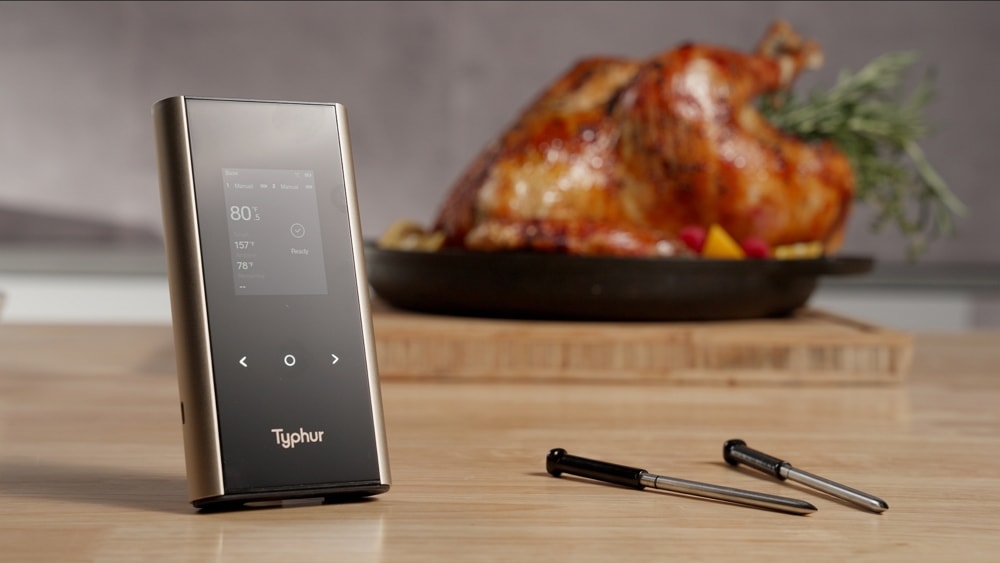
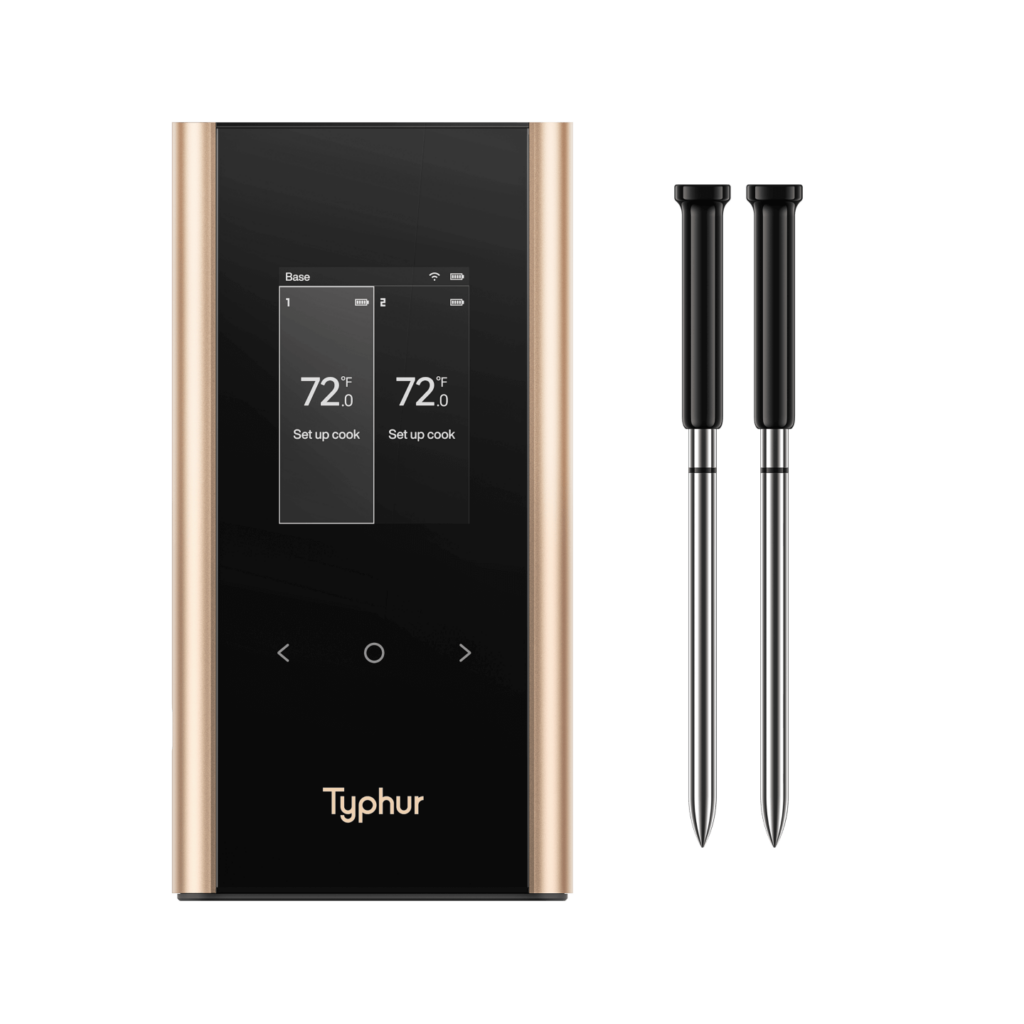
Long Range Wireless Meat Thermometer
Table of contents
How Does a Smart Wireless Meat Thermometer Work?
To break down how does a smart wireless meat thermometer works, you first need to understand a concept: Temperature Gradient. As it cooks, the outer layers of the meat get hotter than the inside, creating a temperature gradient from the outside in. To get the core temperature of you meat you should find the lowest temprature of your meat.
Take the Typhur Sync Gold, for example. Each probe has five internal sensors and one ambient temperature sensor, with the Syncore algorithm, allows the thermometer to detect the size of the meat, its state (fully or partially thawed), and even the cooking environment. So, the algorithm factors in these details and can predict the best time to pull out the meat and how long it should rest.
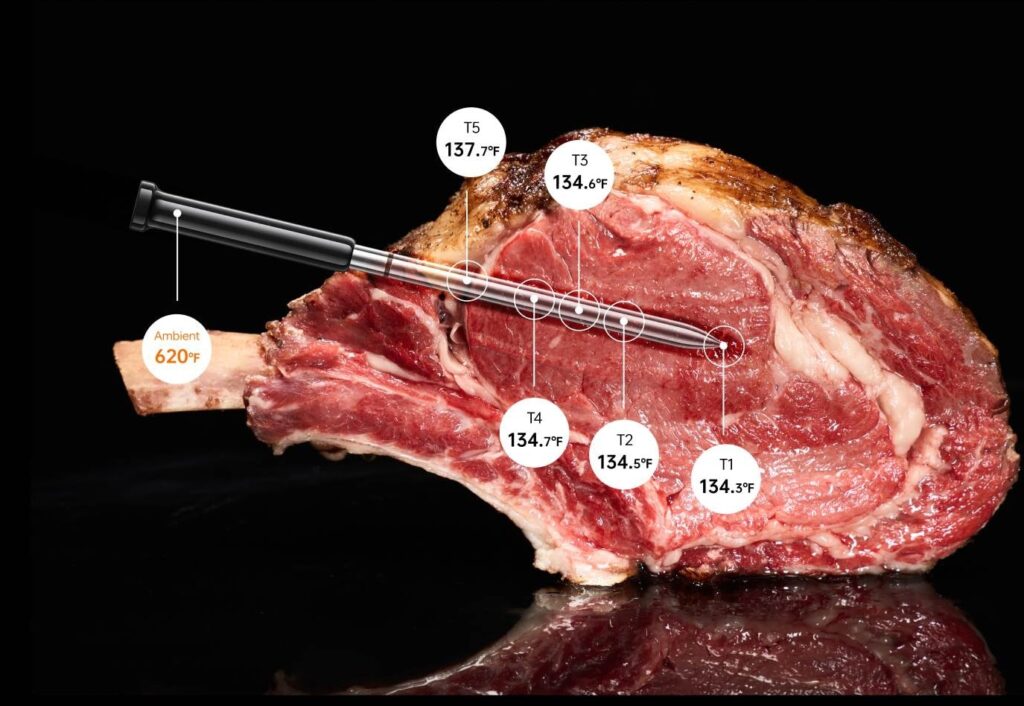
So, this smart wireless meat thermometer is definely the most easy and smart cooking device. Just follow below steps to easily monitor the internal temperature of your meat:
- Pair the thermometer with the App.
- Intert the probe into the thickest part of the meat.
- Set the target temperature and start cooking.
- The app will alert you to when the target temperature is reached.
Wireless Thermometer vs. Wired Thermometer
If you are not sure about upgrading from a traditional wired thermometer to a smart wireless one, understanding the differences might help you make the right choice.
To help you weigh the pros and cons, I’ve put together a comparison chart that breaks down the key differences between wired and wireless probes.
| Feature | Smart Wireless Thermometer | Wired Thermometer |
| Monitoring Style | 100% wire-free, no cables or attachments, just a probe that goes directly into the meat | Comes with a probe and a cable connected to a receiver that stays near the cooking area (which can sometimes create safety concerns) |
| Sensors | Internal temperature sensors + ambient sensor | Only one sensor that read the internal temperature |
| Range | Long range (Bluetooth: up to 400 feet; Wi-Fi: unlimited) | Limited by cable length (typically 3-6 feet) |
| Smart Features | Alerts, preset cooking temps, timers, multi-temperature curves | Some models have alarm |
| Mobility | High mobility (you can check from anywhere within range) | Limited (tethered to oven or grill area) |
| Cost | Usually more expensive due to smart features | More affordable, no app or Bluetooth needed |
| Best For | Long cooks, multi-tasking, big roasts or BBQs | Simple monitoring when you’re close to the cooking area |
Wireless Thermometer vs. Instant Read Thermometer
Many users also asking do they need a wireless meat thermometer if already have a instant read meat thermometer? Our answer is yes.
While an instant-read thermometer is perfect for quick, spot checks at various points in your food, letting you take multiple readings quickly. A wireless thermometer gives you real-time, continuous monitoring the temperature of one specific point over time, with the added benefit of alerts and remote monitoring.
| Feature | Wireless Thermometer | Instant-Read Thermometer |
| Monitoring Style | Continuous tracking at a fixed point | Quick spot checks at multiple points |
| Best For | Long cooking processes (roasts, BBQ, smoking, grilling) | Fast-cooking foods or checking multiple spots |
| Mobility | Can monitor remotely via smartphone app | Must be physically present for each check |
| Alerts and Alarms | Yes, with customizable alerts when food reaches target temperature | No alerts; manual checking required |
| Ease of Use | Hands-free after setup | Requires frequent manual checking |
| Cost | Higher due to wireless tech and app integration | more affordable, simpler design |
| Examples | Typhur Sync Gold | Typhur InstaProbe |
So, as you can see, these two thermometers use for different cooking desks. For longer, slower cooks—think a whole turkey, a beef brisket, or pork shoulder, a wireless meat thermometer is your best bet for easy monitoring without constant checks. But if you’re cooking quicker items like steaks, chicken breasts, or fish fillets, an instant-read thermometer is perfect for quick, on-the-spot readings.
Best Wireless Smart Meat Thermometer
At Typhur, we believe precision and freedom create unforgettable cooking experiences. That’s why we created the Typhur Sync Gold—a smart, wireless meat thermometer designed to redefine cooking.
Imagine monitoring a brisket or turkey in the smoker without hovering nearby. With Sync Gold’s ultra-long-range monitoring, you get a reliable connection up to 3,000 feet away—ten football fields in length! Unlike Bluetooth, our Sub-1G technology cuts through walls, ovens, and smokers for stable, consistent temperature readings.

The Sync Gold is built for precision. Each probe has six sensors, delivering accuracy within ±0.5°F. Whether it’s medium-rare steak or slow-cooked pork, you’ll get exact results every time.
Reliability matters to us, too. The Sync Gold is durable, with a 1.5-year warranty for lasting confidence. From home cooks to seasoned chefs, Typhur Sync Gold is more than a tool—it’s a trusted partner in every meal.
FAQs
Most wireless meat thermometers are designed to stay in the oven throughout cooking. Just check the model’s heat tolerance to ensure it can handle high temperatures. If you use Typhur Sync Gold, it is built for high-heat environments, withstanding temperatures up to 932°F.
Depend on the waterproof leval. The Typhur Sync Gold boasts the highest waterproof grade, allowing you to safely place the probe inside a sous vide bag with your meat. Even when fully submerged in cooking juices, the probe remains reliable and safe for use.
Clean the probe with warm, soapy water. Some models no waterproof, you need to avoid submerging the entire thermometer. Wipe down the base unit with a damp cloth and avoid getting water into any electronic parts.


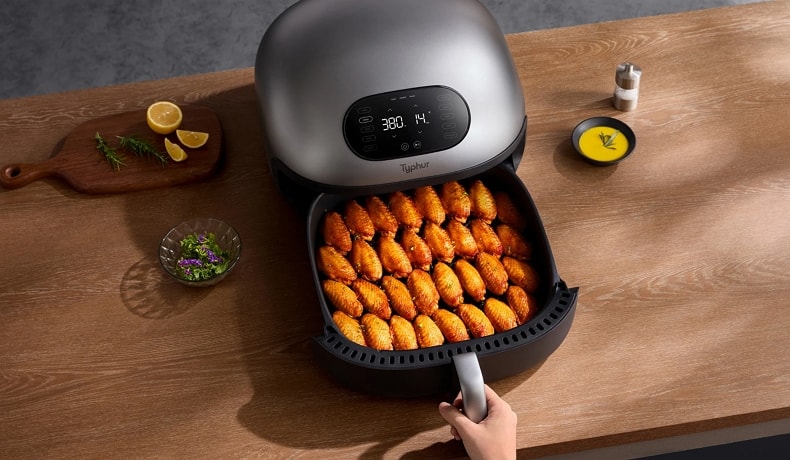
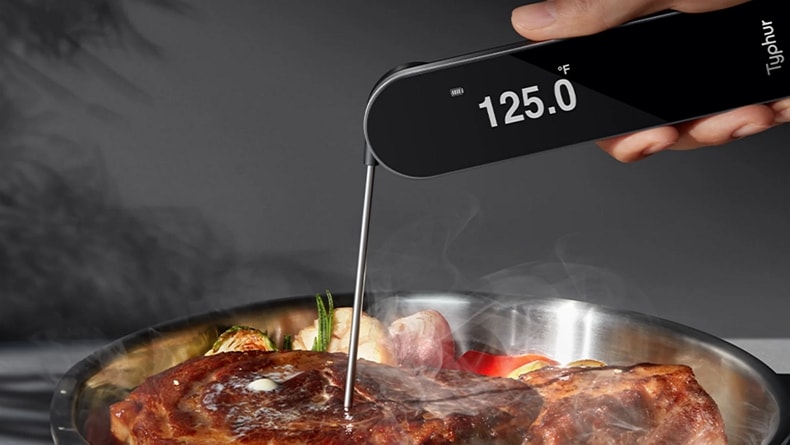
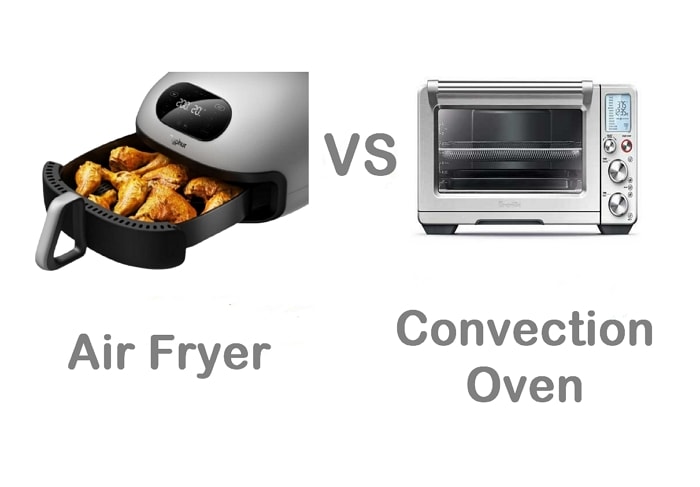
No hay instrucciones en castellano para su uso, en la aplicación tampoco existe el castellano, viene por defecto en grados Farengeit y no encuentro la forma ni ninguna explicación para cambiarlo a Celsius, si es que se puede, lo cual ya sería suficiente motivo para devolverlo.
Este producto si se vende en España entiendo que por Ley debería venir en castellano, lamentable.
Hola Martín, lo siento por no tener intrucciones y app en castellano, ya he compartido su experiencia a nustro gerente de producto, y están trabajando para añadir el idioma castellano lo antes posible. Por el cambio de grados Farengeit a Celsius, que si se puede cambiar en la app mediante: Setting > Measurement Units, cámbielo de US a Metric.
Bonjour,
Puis-je utiliser le thermomètre Typhur Sync Or double dans mon Air fryer Dome 2?
merci
Hello! Yes, you can use the Typhur Sync Gold Dual thermometer with your Dome 2 air fryer.